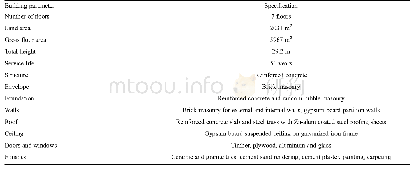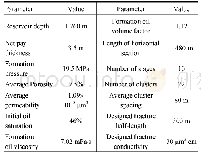《Table 1 Basic parameters of the case study building》
 提示:宽带有限、当前游客访问压缩模式
提示:宽带有限、当前游客访问压缩模式
本系列图表出处文件名:随高清版一同展现
《Life cycle carbon emission assessment of a multi-purpose university building:A case study of Sri Lanka》
A building usually comprises of hundreds of materials,and therefore,in order to increase the ef?ciency of the assessment,the concept of major building materials,which has been used in several previous studies(Tae et al.,2011;Roh et al.,2014a;Roh and Tae,2016)was adopted.The major building materials for a typical reinforced concrete framed building in Sri Lanka were taken as those which account for more than 1%of total material weight or total material carbon emission.Using a pilot survey conducted on several reinforced concrete buildings in Sri Lanka,the major building materials were identi?ed as ready-mixed concrete,reinforcement steel,clay bricks,random rubble,cement,sand,aluminum,ceramic tiles and paint.The percentage contribution of the building materials to total weight and carbon emissions are presented in Table 2.The material?ow per unit?oor area was found to be 2417.68 kg·m–2which is comparable with previous studies(Shukla et al.,2009;Pinky Devi and Palaniappan,2014).As shown in Table 2,the structural materials;concrete,rubble and reinforcement steel contributed to about 57.84%of total material mass whereas clay bricks,cement and sand used for brick masonry contributed to about 41.6%.The share of other materials such as aluminum,ceramic tiles and paint to the total mass was negligible.
| 图表编号 | XD0018447100 严禁用于非法目的 |
|---|---|
| 绘制时间 | 2018.09.01 |
| 作者 | Ramya KUMANAYAKE、Hanbin LUO |
| 绘制单位 | Department of Construction Management, School of Civil Engineering and Mechanics, Huazhong University of Science and Technology、Department of Construction Management, School of Civil Engineering and Mechanics, Huazhong University of Science and Technology |
| 更多格式 | 高清、无水印(增值服务) |





